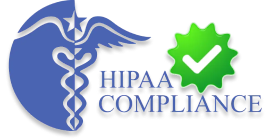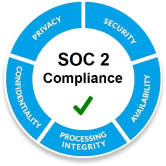What are Cloud vs On-Premises Solutions?
i. Explanation of Cloud and On-Premises Infrastructure
Cloud Infrastructure
Description
Cloud infrastructure stores, manages, and processes information by using remote servers located on the Internet.
Functionality
It provides scalability, allowing businesses to adjust resources based on demand without physical Hardware upgrades.
Accessibility
Accessible from any location with internet access, facilitating remote work and global collaboration.
Cost Model
Operates on a pay-as-you-go or subscription basis, reducing upfront costs and aligning expenses with usage.
Security
Assumes that cloud service providers will have robust security procedures in place, including compliance Certifications and data encryption.
On-Premises Infrastructure
Description
On-premises infrastructure involves maintaining servers and data centers locally within an organization's premises.
Functionality
Offers complete control over hardware and software configurations, enabling tailored solutions to specific organizational needs.
Accessibility
It is typically accessed locally within the organization's network, limiting accessibility based on physical proximity to the data center.
Cost Model
Involves upfront capital expenditures for hardware, software licenses, and infrastructure setup, followed by ongoing maintenance costs.
Security
Provides direct oversight of security protocols, allowing organizations to implement tailored security measures based on internal policies and regulatory requirements.
ii. Evolution and Adoption Trends
Cloud computing has changed quickly because it's scalable, cost-effective and flexible. #The worldwide end-user spending on public cloud services is forecast to grow 20.4% to total $678.8 billion in 2024, up from $563.6 billion in 2023, according to the latest forecast from Gartner, Inc. This growth happens as businesses use cloud solutions to make their operations more flexible and manage their IT systems better. On the other hand, some industries like government and finance prefer on-premises solutions to keep strict control over their data. They need high security and follow strict rules. Even though these differences exist, more businesses are choosing hybrid cloud solutions. These combine the benefits of cloud and on-premises systems to meet different business needs effectively.
Key Differences between Cloud and On-Premises
i. Infrastructure ownership and control
Cloud
Organizations using cloud services rely on third-party providers to remotely manage and maintain the infrastructure. They do not own the physical hardware or data centers.
On-Premises
Business has complete ownership and control over their communications when using on-premises solutions. On their property, they oversee and maintain networking hardware, data centers, and servers.
ii. Scalability and Flexibility
Cloud
High scalability provided by cloud technologies enables companies to swiftly adjust their resource levels in response to demand. Without requiring upfront hardware purchases, this flexibility allows for quick expansion and varying workloads.
On-Premises
Expanding on-premises infrastructure necessitates transparent planning along with increasing hardware and resource expenditure. Implementing additions and modifications could take time, which could reduce agility.
iii. Security and Compliance
Cloud
Cloud providers implement robust security measures and compliance certifications to protect data. They manage security updates and ensure regulatory compliance, offering advanced security features that are continually updated.
On-Premises
Security procedures and compliance measures are directly under the control of organizations utilizing on-premises systems. Based on particular requirements and legal constraints, they can deploy customized security solutions, but they still have to handle upgrades and compliance on their own.
Are you facing server security challenges? RND Softech makes stronger your digital castle.
Initial Investment and Long-Term Costs
i. Upfront Costs of On-Premises Solutions
On-Premises
A large upfront investment in hardware, software licenses, and infrastructure configuration is necessary to put up an on-premises system. Purchasing servers, networking gear, storage devices, and making sure there is enough room for expansion as well as cooling systems are among the expenses.
ii. Subscription and Usage Costs of Cloud Solutions
Cloud
Cloud solutions typically involve lower upfront costs as they operate on a subscription or pay-as-you-go model. Data transfer, storage, and virtual machines are among the resources that businesses pay for. This model reduces initial capital expenditure but may accumulate costs over time-based on usage and service level agreements (SLAs).
iii. Cost Considerations over Time
Both
Over time, the cost dynamics of cloud and on-premises solutions vary. On-premises solutions may stabilize costs once infrastructure is set up, with ongoing expenses mainly for maintenance, upgrades, and operational support. In contrast, cloud costs can fluctuate based on usage, scaling requirements, and additional services utilized. Businesses must consider data growth, service requirements, and long-term operational efficiencies when evaluating total cost of ownership (TCO).
Maintenance and Operational Expenses
i. Management of On-Premises Hardware and Software
On-Premises
Hardware and software infrastructure is managed and maintained by organizations. This covers routinely checking on, debugging, upgrading, and fixing servers, networking hardware, and software. IT departments must also guarantee that industry standards are followed and that sufficient security measures are in place.
ii. Support and Updates in Cloud Environments
Cloud
The infrastructure and services of cloud service providers are maintained, updated, and supported by them. This includes hardware updates, security patches, and software upgrades. Businesses benefit from automated updates and proactive support, reducing the operational burden on internal IT teams
iii. Comparison of Ongoing Operational Costs
Both
The ongoing operational costs differ significantly between on-premises and cloud environments. On-premises solutions require dedicated resources for hardware maintenance, IT personnel salaries, and infrastructure management. Cloud solutions generally have lower ongoing operational costs due to reduced need for hardware maintenance and scalability benefits. However, cloud costs can increase with usage and additional services, requiring careful monitoring and optimization to control expenses effectively.
Downtime and Disaster Recovery
i. Risks Associated with On-Premises Downtime
On-Premises
Downtime can result from hardware failures, power outages, or cyber-attacks. Recovery is slow and costly, requiring manual fixes and causing significant business disruptions.
ii. Disaster Recovery Strategies in Cloud Environments
Cloud
Cloud providers offer robust disaster recovery options, including automated backups and geographically distributed data centers. These guarantee quick recovery with minimal data loss and predefined recovery times.
iii. Impact of Downtime on Business Continuity
Both
Downtime disrupts operations and affects customer service. On-premises recovery takes longer due to physical intervention needs, while cloud solutions offer faster, more reliable recovery and better supporting business continuity.
Business Size and Needs
i. On-Premises Considerations for Large Enterprises
On-Premises
Large enterprises often prefer on-premises solutions because they offer complete control over data and infrastructure. This management is essential for sectors like banking and healthcare that demand sensitive data or have stringent regulatory constraints. Large enterprises typically have the resources to invest in and maintain their IT infrastructure, allowing for customized solutions that meet specific business needs. On-premises setups also enable direct oversight of security protocols and compliance measures.
ii. Suitability of Cloud Solutions for Small to Medium Businesses (SMB)
Cloud
Small and medium-sized businesses (SMBs) benefit greatly from cloud solutions because of their lower upfront costs, scalability, and flexibility. The pay-as-you-go model, which only enables SMBs to pay for the resources they actually use, has advantages for them.
Tired of server meltdowns? Let's fix it together! Click here to discover painless server management
Compliance and Regulatory Requirements
i. Compliance Challenges with Cloud Services
Cloud
Guarantying compliance with regulations like GDPR, HIPAA, and PCI-DSS can be complex due to shared responsibility between the provider and the customer. Businesses need to assess providers' certifications and understand their own compliance duties.
ii. Regulatory Standards in On-Premises Data Management
On-Premises
Provides direct control over data, making it easier to meet specific regulatory standards. Organizations can customize security and compliance measures to stick to industry regulations.
iii. Addressing Industry-Specific Requirements
Both
Industries have unique compliance needs. Cloud providers offer customized services and certifications, while on-premises solutions allow for customized compliance strategies. Businesses must choose the solution that best supports their specific regulatory requirements
Long-Term Viability and Future-Proofing
i. Technological Advancements in Cloud Computing
Cloud
Cloud computing continually evolves with advancements such as AI, machine learning, and IoT integration. These technologies enhance performance, scalability, and efficiency, making cloud solutions increasingly future-proof and adaptable to emerging business needs.
ii. Upgrading On-Premises Infrastructure
On-Premises
Upgrading on-premises infrastructure can be time-consuming and costly, requiring new hardware, software updates, and potential downtime. However, it allows for tailored solutions and complete control over the upgrade process, ensuring compatibility with existing systems and specific business requirements.
iii. Planning for Future Business Growth
Both
Future-proofing involves planning for scalability and adaptability. Cloud solutions offer easy scalability and access to the latest technologies, supporting rapid growth. On-premises solutions require more planning and investment to scale but provide greater control. A hybrid approach can combine both strengths to support future growth effectively.
Conclusion
i. Decision-making framework for Server Solution Selection
When choosing between cloud and on-premises solutions, consider cost, control, scalability, security, compliance, and future growth needs. Calculate the specific requirements of your business, industry regulations, and long-term goals to make an informed decision.
ii. Future Trends in Cloud and On-Premises Deployments
The trend toward cloud adoption continues to grow, driven by technological advancements and the need for scalable, cost-effective solutions. However, on-premises solutions remain relevant for industries with strict compliance and control requirements. Hybrid models are becoming more popular, offering a balanced approach that leverages the benefits of both cloud and on-premises deployments.
Sick of server crashes? Learn reliable, round-the-clock support from RND Softech!










